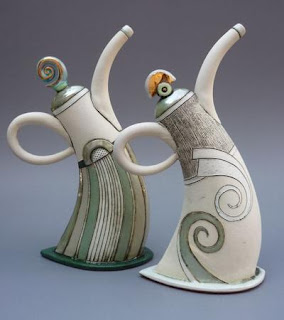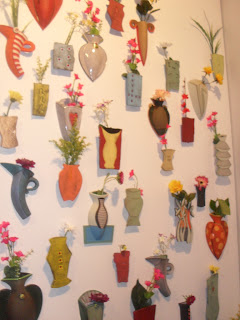Case Study of a peer – Zanel Heystek
“How do you observe the world around you? What do you see when you look at something? Do we settle for the obvious or what we assume to be obvious? More than the obvious is revealed when looking deeper.
I get drawn in by the patterns of my surroundings, the patterns within patterns. I seek the humour accompanying these patterns that animate the world.”
- -Zanel Heystek
Zanel Heystek is an aspiring B-tech student at Cape Peninsula University of Technology. She matriculated at Stellenbosch High school and lives in Durbaville with her twin sister, who is studying zoology and botany at Stellenbosch University. She was introduced to jewellery in high school when given the opportunity to briefly attend jewellery technical classes at Birmingham Turves Green Girls School in England. Since her first year at CPUT she has been working on Saturdays as a sales consultant at Gerhard Moolman Fine Jewellery in Durbanville. She was employed part-time at Laser Options for six months, working at the bench, carving and model- making as well as cleaning up castings.
Her design philosophy revolves around patterns within patterns. She observes objects around her very closely. When looking at something that appears to be simple, she looks deeper and discovers weird and wonderful patterns within. She examines the object or image from an artist’s point of view, by asking herself questions about the materials and shapes and techniques used. She looks at all aspects of design she can draw from her inspirations, such as colour, composition and movement and perceives it with a humorous perspective. She is mainly influenced by everyday surroundings, architecture, people and landscapes. She is particularly inspired by interesting graphic art, such as magazine advertisements and takes a keen interest in unusual or dual-function furniture.
Her 3rd year theme revolved around an interesting Toyota advertisement she came across in an adventure magazine. The image demonstrates the effects of patterns one can achieve when looking deeper. She found that the trees in the image weren’t trees at all, but were a series of windmills forming the shape of a tree. She looked even closer and discovered that the windmills were made up of a repetition of elongated trapeziums as ‘leaves’ and the ‘branches’ were the same shape in a more structural form. She finds a way of breaking down a source of inspiration by analyzing the image thoroughly and discovers patterns within them, which she manipulates in interesting ways.
Her design and manufacturing style displays geometrical aspects, which derive from her love for architecture and furniture design. The mechanical aspect in her work illustrates a definite sense of movement and almost a constant feature throughout her jewellery as seen in her windmill earrings that actually rotate and comes with a perspex stand that resembles the frame of a windmill. When placing the earring on the stand, it depicts an actual turning windmill. This design is further enhanced with plique a’ jour enamel which allow the wonderful colours to filter through.
plique a' jour windmill earings
One of her bracelets is made up of a series of repetitive trapezium shapes, which she meticulously constructed to fit into each other to create rhythm and movement. The trapezium shape is used throughout her range of jewellery in playful repetitive patterns, reminiscent of a windmill, with subtle changes that provide a constant flow through the range. The bold pierced out bangle is shaped like a windmill that is wrapped around your arm that features changeable stone by screwing and unscrewing the setting.
link bracelet
blue topaz windmill stand ringwindmill ring
windpomp bangle
Her yellow gold earings features rectangular bars overlapping each other in a brick-like fashion and are riveted to create a sense of movement. The earrings feature a triangular-shaped smokey quartz stones that contrast the colour of the yellow gold. The shape of the stones compliments the windmill theme and the shepherds hook is bent in the shape of a trapezium which completes the geometrical look of the piece.
smokey quartz yellow gold earrings
Her influence of graphic design art can be seen in the set of pin brooches. The heads are all trapezium shaped frames which features photographs relating to her theme such as windmills, landscapes and sunflowers. A beautiful rendering of a windmill is depicted on a limoge (opaque enamel) setting with graphite pencil. Her theme also features a range of rings in variations of trapezium shapes that is repeated in alternative patterns to create various effective compositions. Each ring has a unique finish and are either highly polished, matte or engraved with linear patterns with a basse taille enamelling technique. This range was manufactured by a computer aided programme called Rhinoceros and carved out with a Roland Miller machine in wax and was then cast in silver in the lost wax casting technique.
photo brooches
limoge ringbasse taille rings
Zanel Heystek generally has a clean-cut look with very subtle textures such as engraving or etching to enhance her sterling silver designs. She uses precious stones, photographs and enamel as a source of colour to elaborate her theme or designs. She does not use fabrics and odd findings as embellishments as this takes the attention away from the lustre of the highly polished metal finish.
Her aims and asperations are to further explore the many possibilitiies of pattern and design. She is currently persueing her research for her thesis on the history and exploration of kaleidascopes. She wishes to create a jewellery range using kaleidascopes as an element in her theme and collaberating it with her windmill theme. She can be found on facebook and also has a blog from which she markets herself at obvious-ly-not.blogspot.com.
Other third year pieces
tennis bracelet
cactus enamel ringtrinket box- jack-in-the-box
plique a' jour window
second year ring range project

























































